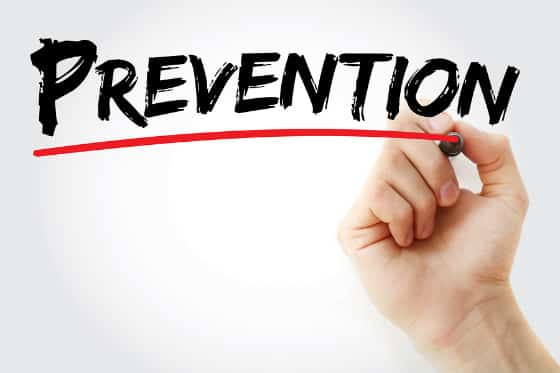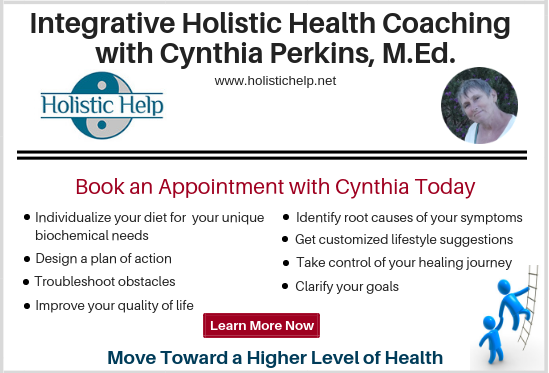Well, once again it’s breast cancer awareness month and I think the most important factor that should be focused on is prevention. By making simple changes in the foods you eat and your lifestyle, you can significantly reduce your chances of developing not only breast cancer but cancer of any kind. A major fact to be aware of is that we all have cancer cells in our body. Cancer becomes deadly when the cancer cells outnumber the healthy cells. So that is where the focus of prevention lies.
I attended an excellent webinar several years ago presented by Dr. Charles Gant and Dr. Bruce Rind from National Integrated Health Associates, and one of the most important points to be brought home by Dr. Rind is this: “breast cancer doesn’t just happen because of “dumb luck” or some unexplainable phenomenon, it occurs because the “terrain of the breast is conducive to the evolution of cancer.”
The way to prevent breast cancer is to keep those conditions from occurring and here are some of the best ways to accomplish that task.
Prevent Estrogen Dominance and Improve Lymph Drainage
Dr. Rind says that correcting or preventing estrogen dominance and improving the drainage of the lymph system are the two most crucial factors. Now, in order to accomplish those two goals, here are a few guidelines:
- Avoid coffee (promotes estrogen dominance)
- Avoid pesticides and herbicides (promotes estrogen dominance)
- Avoid artificial flavorings and colorings (promotes estrogen dominance)
- Avoid junk food (promotes estrogen dominance)
- Avoid alcohol (promotes estrogen dominance)
- Avoid sugar. Sugar causes a rise in estrogen, it leads to insulin resistance and weakens your immune system. Cancer cells love sugar. The more sugar you eat, the more food you are providing for your cancer cells. (Remember we all have cancer cells in our bodies.)
- Prevent insulin resistance. Dr. Christine Horner tells us that women with high levels of insulin have a “283 percent higher incidence of breast cancer.”
- Avoid progestins. Progestins are synthetic hormones found in synthetic hormone replacement and the birth control pill. These synthetic hormones are estrogenic chemicals. The body can’t convert them into anything useful. They cause a progesterone deficiency and result in estrogen dominance.
- Avoid mammograms. Every time you have a mammogram, you increase your risk of developing cancer by 1 percent and compression of the breast can spread cancer if it has already developed. There are numerous other issues with the mammogram as well, I encourage you to read 8 Reasons You Shouldn’t Have a Mammogram.
- Don’t wear a bra. Bras significantly inhibit your lymph drainage and increase the temperature of your breasts. Women who wear a bra 24 hours a day are 125 times more likely to develop breast cancer than women who don’t wear a bra at all. I encourage you to read 8 Reasons You Should Burn Your Bra.
- Exercise regularly. Among other things, exercise keeps the lymph system working and boosts the immune system. A mini-trampoline is another very good way to increase lymph function. Women who exercise regularly have a much lower incidence of breast cancer. It’s important that you don’t wear your bra when exercising, as the breasts need to be able to bounce in order to detoxify. And be sure to exercise properly, too much exercise or exercise that is too prolonged is actually bad for your health.
- Keep the temperature of the breast cool. Bras and too much estrogen increase temperature.
- Maintain adequate levels of Vitamin D, preferably from the sun, or D3 supplementation. Women with good levels of Vitamin D are 70 percent less likely to develop breast cancer.
- If you have fibrocystic lumps, the breasts need lymph drainage. Dr. Rind recommends this simple lymph drainage exercise. Use your hand to stroke the breast upward from underneath and push upwards toward the clavicle. Place the hand directly under the breast, push up and squeeze as if you are squeezing honey out of a sponge. Slow and deep strokes. Two or three strokes on the inside and outside of each breast. Two applications to each breast. He says it’s easiest to perform in the shower or tub when your skin is slippery.
- Correct a shorter leg. Dr. Rind says that some women have one leg that is slightly shorter than the other and if this is the case it can inhibit the lymph system from draining properly. Just 1/8 of an inch of difference can produce this result. This can be corrected by placing a lift in the shoe. He says to look in the mirror and if one shoulder is higher than the other, then that leg is shorter than the other.
- Have a thermogram. Thermography uses an infrared camera that looks at the patterns of temperature throughout the body. Lots of hot spots indicate high risk. Dr. Rind says that thermography can detect cancer up to 12 years before it occurs. Therefore, if you have a thermogram that indicates you are at high risk of cancer, you can make changes that can reverse the process.
- Mammograms detect cancer that has already occurred, thermography tells us if the conditions in the breast are conducive for cancer. It allows us to know if we are getting close to developing cancer. Mammograms test anatomy and are for correction and thermography tests physiology and is for prevention. Thermography identifies your risk of developing cancer, while mammography identifies the presence of cancer. A thermogram is safe, painless, there is no compression of the breast, and it does not expose the body to radiation. If a thermography image looks aggressive, indicating a good possibility that cancer has already developed, then a mammogram would be used to confirm the presence. A thermogram can also be used to monitor whether treatment is working in someone who already has cancer. Additionally, thermography can also detect other problems like varicose veins, vascular problems, neurological problems, discs, tumors in the abdomen, and dental problems like TMJ.
- Avoid common everyday chemicals found in your disinfectants, nail polish, cosmetics, plastics, etc. Studies have found that exposure before the age of 30 to petrochemicals and acrylic triples a woman’s risk of developing breast cancer in her post-menopausal years. Learn to love yourself in your natural state, or use non-toxic cosmetics.
What we see here is that reducing your risk of breast cancer is truly within the power of your own hands. Although you could never eliminate all risk factors, your destiny is not totally out of your control and you can tip the scales in the right direction by making these simple changes.
The best way to protect yourself from breast cancer is to practice prevention. Educate yourself with the facts from the people who truly care about your health, not those who manipulate the truth for monetary gain or those who are controlled by the manipulators, which is what you see the most in the mainstream media.
Work with Cynthia to make the changes in diet and lifestyle that you need to protect yourself from cancer and to optimize your health all around. Cynthia can help you individualize your diet for your unique needs and overcome your cravings for sugar and carbs or other addictive substances like coffee and chocolate, provide personalized lifestyle tips, identify underlying contributors to any symptoms you may experience, and build a strong self-care plan to enhance your healing journey.



Thank you for this great article, Cynthia. I think it’s comprehensive, inspiring and informative. I do many things to help prevent myself developing breast cancer, and I look forward to introducing more ideas soon. I’ll recommend that women I know read this article and read your other posts.
Thanks Nyomi. Nice site you have. Great topic.
first time read I am thankful for these facts